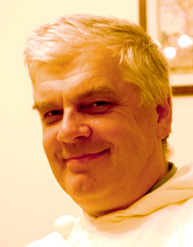Do the Sexes Experience Sin Differently?
The Vatican has approved a study which concludes that men and women sin differently.
When commenting on a new book dedicated to St. Thomas Aquinas’ teachings on the seven capital vices, Monseigneur Wojciech Giertych, personal theologian to Pope Benedict XVI, told Vatican newspaper L’Osservatore Romano that “there is no sexual equality when it comes to sin.” 
In the article, “The Unsuspecting Resources of Weakness,” Mgr. Giertych referred to his own anecdotal experience at the confessional, and said his insights were supported by an analysis of confessional data carried out by the Rev. Roberto Busa, a 96-year-old Jesuit priest. Fr. Busa is the author of Index Thomisticus, a complete lemmatization of the works of St. Thomas Aquinas.
Mgr. Giertych asserts St. Thomas Aquinas taught that pride is humanity’s greatest enemy because it leads a person to believe he or she doesn’t need God and “hinders a person from having a relationship with God.” 
Lust and sins against chastity “are less dangerous because they are accompanied by a strong sense of humiliation and, as such, can be an occasion to return to God.”
Mgr. Giertych describes men’s sins as “difficult,” while women’s are described as “dangerous.”
“When one looks at capital sins not from the view of their opposition to grace but at the difficulty they create,” Mgr. Geirtych states, “it is clear that men experience them differently from women. For men, the most difficult to take on is lust, followed by gluttony, sloth, anger, pride, envy and avarice. For women, the most dangerous is pride, and then envy, anger, lust, gluttony and the last is slothfulness.”
A woman described as a founder of feminist theology has a different spin on sin and the sexes.
Valerie Saiving (married name – Goldstein), a religious studies teacher at Hobart and William Smith Colleges from 1959 to 1987, published an essay in 1960 in which she appeals for greater awareness of the ways in which concepts of masculinity and femininity shape the ways in which we experience sin. Her theories have been developed and refined by two generations of female scholars. 
In her article, “The Human Situation: A Feminine View,” she forms what can be called a feminine complaint against contemporary theologians who make the mistake, she believes, of assuming that a “thinking man’s theology is equally good for a thinking woman.”
The crux of Saiving’s argument is that the focus on pride–characteristic of traditional Christian interpretations of sin–reflects male experience in a way that is inappropriate to the experience of most, if not all, women.
A landmark in both feminism and religious studies, Saiving’s article was the first to insert gender in the study of religion. Within two months of its publication in the Journal of Religion, Time magazine ran a 700-word article on Saiving and her paper.
Read the Time article here.
I feel ashamed and very uneducated that I never heard of Valerie Saiving prior to researching this article. I’m grateful to have discovered her now. Her analysis was the starting point for the modern development of feminist theology. 20 years after her article, author and religious studies professor, Judith Plaskow, took up and developed Saiving’s analysis in Womenspirit Rising: A Feminist Reader in Religion.
I think it was intriguing for Mgr. Gierytch to partner with Fr. Roberta Busa, known for his usage of computers for literary and liturgical analysis. I was a little scandalized he used confessional data (I thought it was sacroscant?) and, the sampling was probably pretty small and select, since not that many people go to confession anymore, and most of the examples Mgr. Gierytech cites are nuns.
